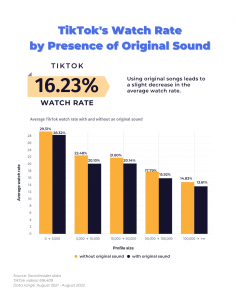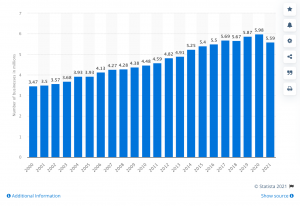Gamification is emerging as a favored tool for boosting customer engagement. Gamification combines “game mechanics” – such as point-based award systems and other non-traditional incentives – to build relationships and to drive sales. As of 2015, 87% of retailers were already using some form of gamification to engage customers. Customers are fickle and often beholden to the lowest prices. However, gamification gives retailers a tool with which to build relationships and improve customer experience.
Gamification itself is far from a new concept, and many retailers have been using it over the years to engage customers. However, mobile apps offer opportunities to engage customers in new and unique ways. Many retailers, including e-commerce and brick-and-click companies, are investing in web application development and mobile apps to build gamification platforms that offer customers a “fun” way to engage with their business.
Gamification is relevant for brick-and-mortar retailers, e-commerce, and hybrid click-and-brick retailers as well. The methods used by each type of retailers and each individual store will vary according to the nature of the audiences they target. Many once-traditional brick-and-mortar retailers are now using in-store apps and other digital experiences to engage customers. Meanwhile, augmented reality and other technologies are enabling e-commerce sites to engage customers in the physical world.
Gamification Now Being Integrated Into Retail Web Apps
Gamification has been very popular in e-commerce. eBay’s bidding system is an obvious example of gamification used to drive sales. Customers will often strive to beat out rival bidders while keeping final costs as low as possible. Numerous other e-commerce websites have incorporated bidding features into their shopping experience.
The Home Shopping Network takes gamification a bit more literally, having incorporated over 30 video games into its website. Visitors can play these video games for a chance to win prizes. The HSN’s goal is more or less to replace the family board game nights of the past. By engaging customers through video games, the HSN aims to keep customers on their site for longer periods of time. This gives them the opportunity to make a sale.
Brick-and-click retailers are also using gamification to increase engagement with customers outside of their physical stores. At the height of the CityVille video game, tens of millions of people were playing it, and Best Buy was able to build brand awareness with this audience through it. Back in 2011, Best Buy became the first branded real-world store that CityVille players could construct in their Sim cities.
Meanwhile, luxury apparel company Bonobos created an online scavenger hunt. Images of the company’s apparel were hidden on NotCot.com and NotCouture.com. The first 50 customers who found all of the images were given a $ 50 gift card. This drove traffic to the websites hosting the scavenger hunts and also increased brand awareness for Bonobos.
Adidas, on the other hand, decided to combine sports with its mobile “miCoach” personal trainer app. The trainer uses a desktop app, smartwatches, and other devices to help people stay in shape. People can compete to get their best personal times. For Adidas, engaging people with a digital trainer helps to reinforce their brand position as a physical lifestyle company.
Mobile Payments Are Being “Gamified” Too
Mobile payments are emerging as a very popular payment solution for many customers. Mobile payments grew from $ 8.6 billion in 2015 to $ 24.9 billion in 2016. By 2020, mobile payments are projected to top $ 200 billion!
Some payment processors, for example, have been offering “lotteries” through which consumers can win the items in their baskets. Other companies have been offering on-the-spot coupons and contests.
Android Pay’s code was also tweaked recently to potentially allow for prizes and other gamification attributes. So far, Google hasn’t rolled out gamification, but don’t be surprised if such features show up in the future.
Many Customers Are Reporting Positive Experiences with Retail Web Apps
Apps, in general, are a boon for customers, making the shopping experience easier and helping them save money. A survey found that 32% of customers are already using multiple apps for shopping, while another 16% are using a single app. 72% of those who have used said apps report that they made shopping easier. So while a majority of customers have yet to use mobile apps, those who have used them tend to enjoy them.
For retailers, this points to an obvious opportunity, as developing shopping apps will add value to customers. In turn, these web apps will help retailers establish a relationship with customers. Given the fierce competition in retail and the plethora of choices customers have, these relationships could prove vital.
Gamification will offer new and innovative ways to make retail web applications even more valuable for customers. Engagement, contests, games, and special rewards will encourage consumers to use retail apps more frequently. Enriched with mobile payments and gamification, retail web apps will be even more effective and disruptive.
Marketing Companies and Video Game Developers Target Retail as Well
Outside marketing companies and even video game developers are also using gamification aspects to drive traffic to retailers. These companies see the potential to use gamification to drive foot traffic and eyeballs to businesses. In fact, numerous marketing companies now offer services for setting up scavenger hunts and other similar services.
Video game developers have also been working on augmented reality games. These video games can take “gamification” to a whole new level, combining the real world with video gaming. The most obvious example is Pokemon Go. The popular mobile augmented reality game offers businesses the opportunity to buy “lures” that lure digital Pokemon to their businesses. These Pokemon, in turn, lure Pokemon Go players.
Conclusion: Gamification Offers a Powerful New Way to Engage
Humans are social creatures. We are driven by a variety of motives. Simply wanting to compete and to be number one at something is a powerful drive. It doesn’t matter if that means being the first person to complete a scavenger hunt or to find a rare Pokemon, or whatever else. Many people simply enjoy competing.
Gamification can engage our competitive drive as well as other human attributes, such as our innate desires to explore and learn. E-commerce, brick-and-mortar, and brick-and-click companies can use gamification to engage customers in unique and innovative ways. Doing so will help companies to establish stronger relationships with their audience and drive sales and conversions.
Gamification will only become more prominent as more traditional brick-and-mortar stores evolve into brick-and-click establishments. Add the ever growing “Internet of Things”, virtual reality, and augmented reality, and we can expect our digital devices and apps become part of our daily lives even more inseparably.
Digital & Social Articles on Business 2 Community(113)
Report Post




